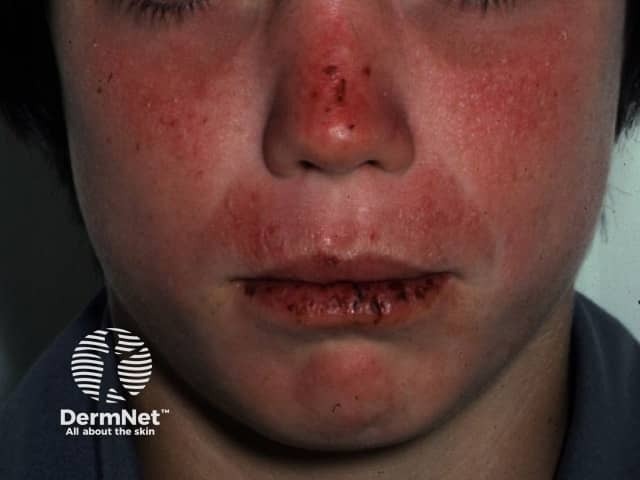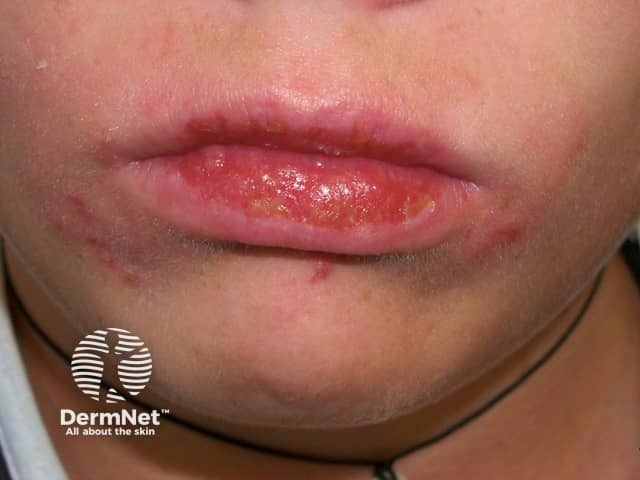Main menu
Common skin conditions

NEWS
Join DermNet PRO
Read more
Quick links
Introduction
Causes
Demographics
Clinical features
Treatment
Actinic prurigo is an intensely itchy skin condition caused by an abnormal reaction to sunlight (photosensitivity). It presents with small, intensely itchy papules (prurigo) on sun-exposed sites.
In severe and long-standing cases, skin covered by clothing (eg, buttocks) may also be affected, and because of this, the role of sunlight may not be so obvious. Also, the condition often persists throughout the year, although usually much worse in the summer months.
Actinic prurigo is sometimes called ‘Hutchinson prurigo’.

Actinic prurigo

Actinic prurigo

Actinic prurigo
Actinic prurigo occurs when affected individuals are exposed to long- and short-wave ultraviolet radiation (UVA and UVB). The reason why this reaction between skin and sunlight occurs is still unknown. Current research suggests that actinic prurigo may be an immunologically-mediated genetic disease as a family history of the condition has been found in some patients. Genetic studies have shown there to be an increased frequency of Human Leukocyte Antigen (HLA) DRB1*0407 in affected individuals.
Actinic prurigo may affect people of all skin types but more commonly occurs in people of Latin American and American Indian descent with darker skin types. Hence it is common in Mexico and Central and South America, where it often affects people who live at high altitude. It rarely affects people in Europe and Asia.
It can affect people of all ages. One-third of patients are children; in many cases, it first occurs in childhood before puberty. When the condition appears during childhood, both males and females are equally affected. However, in adult-onset actinic prurigo, women are two times more frequently affected than men.
Actinic prurigo is characterised by an intensely itchy rash. The rash consists of an eruption of small, scratched, red and inflamed papules, thickened plaques, and nodules. The rash usually appears hours or days following sun exposure. Chronic scratching, ulcers, weeping, crusting and scaling are found in 60–70% of patients. Actinic prurigo may look very like atopic dermatitis (eczema) but is more severe on sun-exposed sites. Areas affected include:
Actinic prurigo usually starts or worsens in spring and summer. In many patients, symptoms persist throughout the year, particularly in tropical areas.
There is no cure for actinic prurigo. The main goal is prevention by avoiding sun exposure. Patients must realise their condition will worsen during the sunniest months of the year and they must adhere to sun protection strategies to avoid or reduce outbreaks.
Some medications have been used to help relieve the symptoms of actinic prurigo. These include:
In some cases, actinic prurigo spontaneously resolves in early adult life. However, in others, it remains throughout their lifetime with relapses and outbreaks according to the seasons.